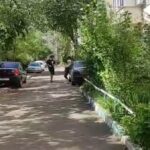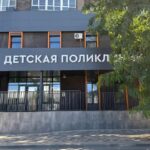Krasnodar The green area in the village of Ventsy, Gulkevichsky District, is being actively renovated as part of the national project “Infrastructure for Life.” Work is underway on a section of Sovetskaya Street—from Magistralnaya Street to Bolnichnaya Street, according to the press service of the Kuban administration.
A new lighting system has already been installed, and the laying of surfaces and creation of pedestrian zones are nearing completion. The park will also feature topiary compositions, swings, and a children’s playground. More than 50% of the planned work has been completed.
Additionally, the renovated park will be decorated with a decorative light installation, and in the final stage, specialists will focus on landscaping the area.
Since 2019, over 1,400 green areas have been renovated across various cities and districts of the region, including parks, squares, embankments, and residential areas. In 2025, plans include improving 103 more public spaces.
Krasnodar
Krasnodar is a major city in southern Russia, founded in 1793 as Yekaterinodar (named after Catherine the Great) and later renamed in 1920 during the Soviet era. Located on the Kuban River, it serves as the cultural and economic hub of the Kuban region, known for its Cossack heritage, vibrant arts scene, and historical landmarks like the Krasnodar Regional Art Museum. The city played a key role in Russia’s agricultural and military history, particularly during the Russian Civil War and World War II.
Ventsy
“Ventsy” refers to traditional Russian peasant huts or houses, typically made of wood and found in rural areas. These structures were common in villages from ancient times through the 19th and early 20th centuries, often featuring thatched roofs and simple, functional designs. They represent traditional Slavic rural life and craftsmanship, though many have been lost to modernization.
Gulkevichsky District
Gulkevichsky District is a municipal district located in Krasnodar Krai, Russia. Established in 1934, it is primarily an agricultural region known for its fertile lands and production of grains, sunflowers, and livestock. The area also has historical significance due to its proximity to the Kuban River and its role in the development of southern Russia’s agrarian economy.
Sovetskaya Street
Sovetskaya Street is a prominent thoroughfare found in many cities across Russia and former Soviet republics, often serving as a central artery with historical, cultural, and commercial significance. Originally named after Soviet governance, many such streets were renamed after the USSR’s dissolution, though some retain the title as a nod to their Soviet-era heritage. Today, Sovetskaya Street typically features a mix of architectural styles, from pre-revolutionary buildings to Soviet modernist structures, reflecting the region’s layered history.
Magistralnaya Street
Magistralnaya Street is a major thoroughfare in Moscow, Russia, originally developed in the mid-20th century as part of the city’s urban expansion. It runs through the northwestern districts, connecting key areas and serving as an important transport route. The street reflects Soviet-era urban planning, with a mix of residential, commercial, and industrial buildings.
Bolnichnaya Street
Bolnichnaya Street (Больничная улица) is a historic street in Moscow, Russia, known for its connection to medical institutions dating back to the 18th century. The street’s name, meaning “Hospital Street,” originates from the nearby *Pavlovskaya Hospital*, one of Moscow’s oldest medical centers, founded in 1763. Today, it retains a mix of historic buildings and modern developments, reflecting Moscow’s architectural evolution.
Kuban
Kuban (or Kuban Oblast) is a historical and cultural region in southern Russia, centered around the Kuban River. It was traditionally inhabited by Circassians and other indigenous peoples before becoming a Cossack stronghold in the 18th–19th centuries under the Russian Empire. Today, it is known for its fertile lands, vibrant Cossack traditions, and as part of the Krasnodar Krai, a key agricultural and tourist area.
Infrastructure for Life
“Infrastructure for Life” refers to essential systems and facilities—such as transportation, water supply, and energy networks—that support modern societies. Historically, such infrastructure has evolved from ancient aqueducts and roads to today’s digital and sustainable technologies, reflecting humanity’s progress in improving quality of life. These systems are foundational to economic growth, public health, and social connectivity.






